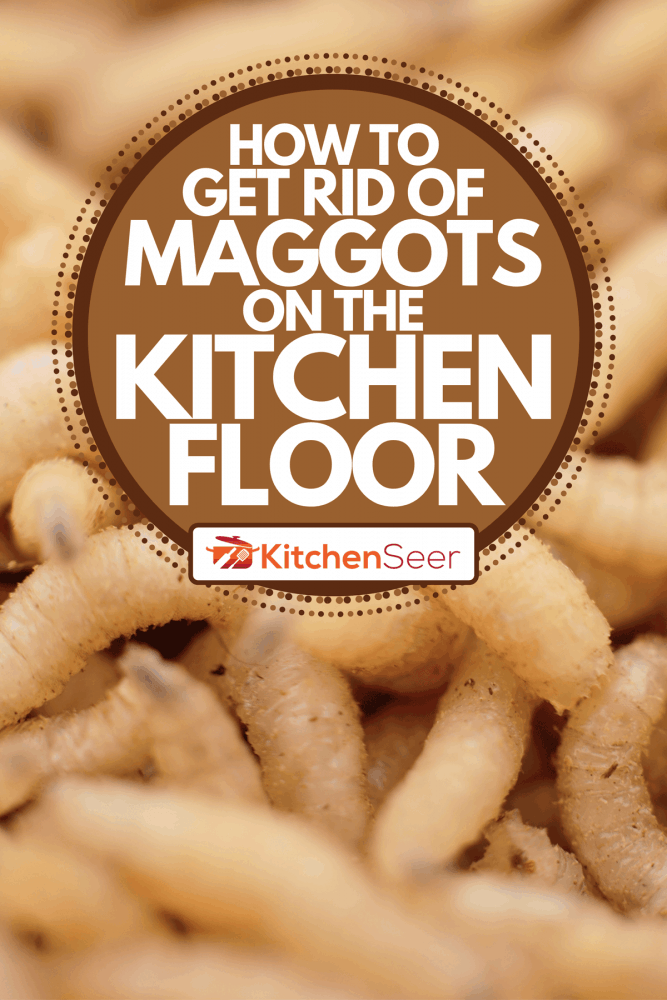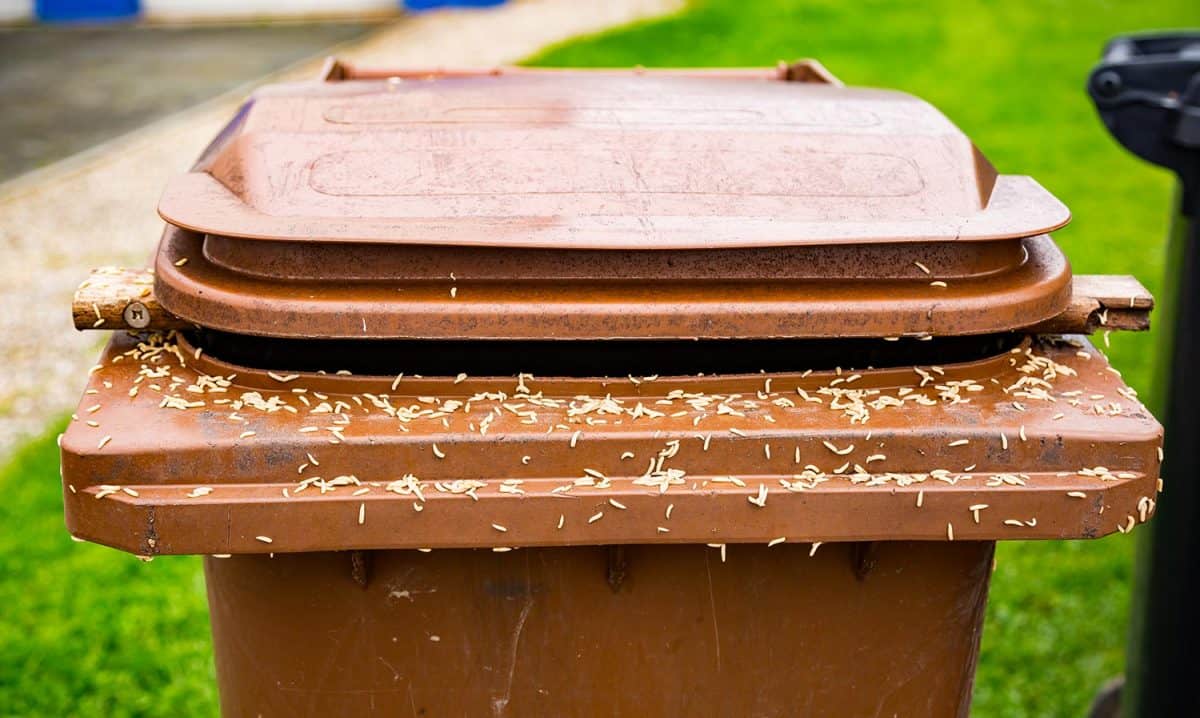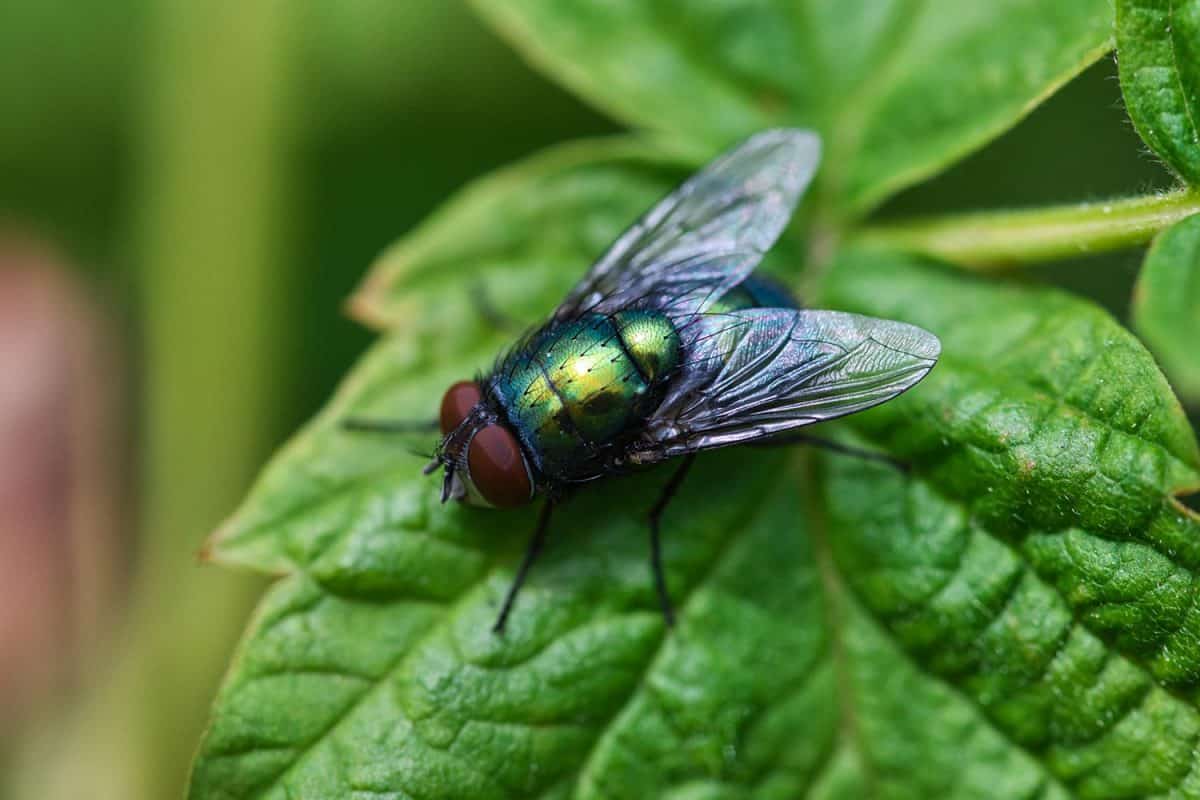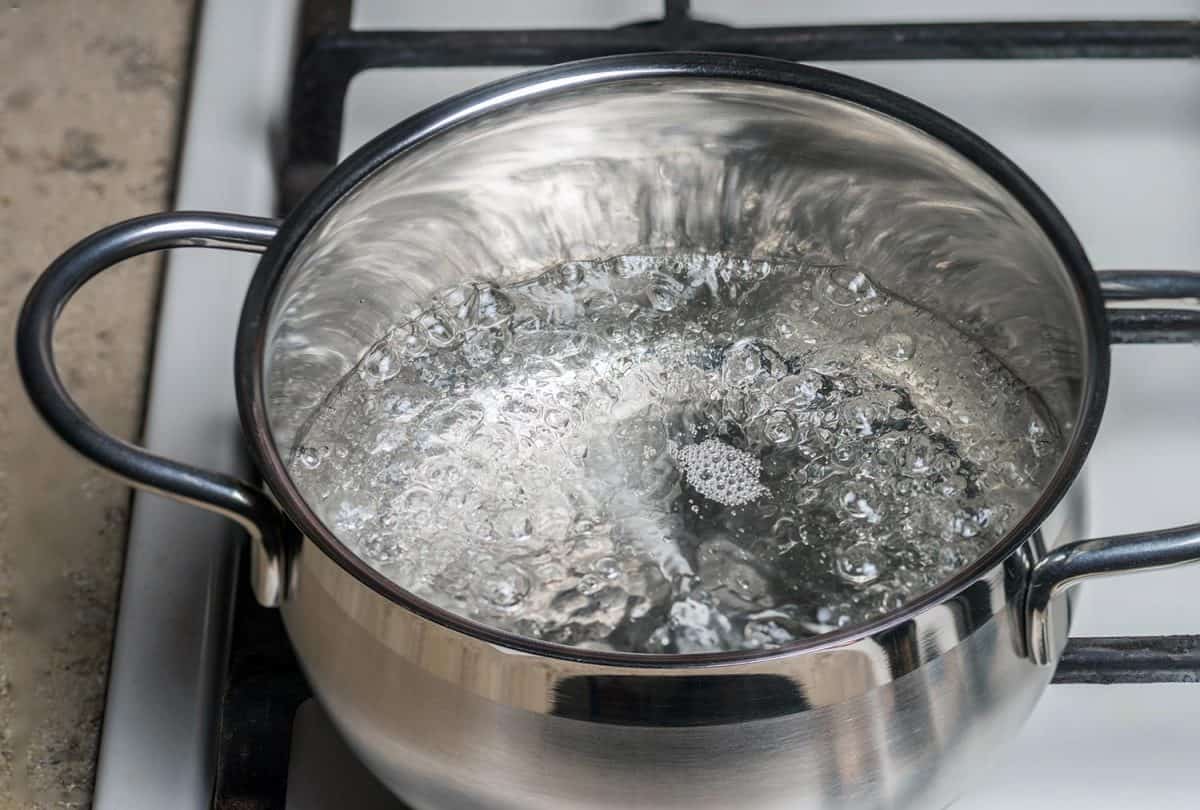If you're in and out of the kitchen often, it can be easy to overlook things. Maybe you left a bit of garbage on the floor. Life gets busy, and you don't clean it up right away. Now there are maggots all over the kitchen floor! So, if you are wondering how to get rid of them, let's find out!
The first step to removing maggots from your kitchen floor is finding out the source of the problem. Look for areas they are commonly coming out of. Flies like to lay their eggs wherever there is rotting food or decomposing trash. In general, you will need to follow these steps to resolve the issue:
- Identify if the pest is a maggot.
- Find the cause of the infestation.
- If there is a fly problem, sort out that problem first.
- Clean the area, throw out the garbage, and sanitize your kitchen.
- Apply repellents or use insecticides, seal cracks/crevices, and keep up with daily maintenance.
These steps are a general idea of how to get rid of them from your kitchen floor. Of course, if you want to find out how to do so in-depth, you will need to research the topic a bit more. There are many ways to eradicate them from your kitchen. If you'd like to know the various methods, keep reading ahead.

Identifying the Pest and Cause
A crucial step you should never skip is correctly identifying the pest. After all, you wouldn't want to treat the area for maggots if it's a different kind of pest. It could make your efforts ineffective.
First, look for any signs of flies in your home. Maggots are the larvae of house flies and blowflies. They are most active during the spring and summer times.
You'll know they are maggots if:
- They are cream-colored and worm-like.
- Maggots are 3/4 of an inch or smaller in size.
- They have no legs and have two hooks that they use for eating.
Now that you are sure of what they are, you will need to look for their food source. House flies are the more common type of pest that will lay eggs in your home. On the other hand, blowflies are usually outdoors. If there's a large number of blowflies in your home, it could indicate you have something decomposing or rotting.
Trouble Spots

Regardless of the type of fly, there are a few spots you need to check for decomposing food or garbage. The areas you should check are:
- Garbage bins
- The pantry
- Pet food
- Fruit or produce that is left out
- Trash bags
In addition to all of the above, you will want to make sure there aren't decomposing animal carcasses in your home. If you know you have a mouse/rat problem, a dead one could be the food source for a maggot. Though, they are tough to miss. While the odor may be strong, follow it and pinpoint where the animal carcass lies.
However, if you don't want to stomach the foul odor dead animals can emit, check the spots where they can hide. They include:
- Cracks in the wall
- Under or around appliances
- Doorways
- Near garbage bags
Pets
If you have pets, check for areas you commonly see them in. They could have dragged some food without you noticing. If left alone for a long time, it provides an ideal spot for flies to lay eggs.
Addressing the Flies

Once you've identified the source, it's time to take control of the fly problem. If you can reduce the number of flies in your home, you will likely have an increased chance of them not returning. Sanitation comes at the forefront. Take out the garbage and clean the problematic areas.
Use whatever method you'd like to catch the flies in your home. Spray insecticide, use fly traps or use organic repellents to keep them out of the kitchen. After they're gone, you will need to ensure you do not give them the ideal conditions to return.
Moisture, filthy areas, and waste attract flies. So, to keep them from returning, address any draining issues you may have in the kitchen. Additionally, clean spills immediately and do not let areas build up with waste. This way, the flies will not have a food source.
Traps
One of the easiest ways to catch flies is to fill a glass jar with apple cider vinegar. Use a funnel as an entryway inside the jar. The flies will follow the scent of the apple cider vinegar and go inside. Once inside, they will have trouble finding their way out. In most cases, they will likely drown in the apple cider vinegar.
There is another variation of this type of trap that you can use. If you want visual guidance on how to make one, here's a YouTube video to help:
Repellants
In addition to traps, you will want to repel the flies from wanting to come into your home. To accomplish this, you can place a few drops of eucalyptus oil on ribbons and strips. Place them in areas where flies can come through.
Other types of natural repellents include:
- Basil
- Catnip
- Marigold
- Lavender
What Is the Fastest Way To Kill Maggots?

Now that you have eliminated the food source and the flies, you will need a way to kill the larvae. There are different ways to go about this. Though, if you don't have time to go out and buy insecticides, you can use boiling water.
This method is the easiest and quickest way to kill them. There is no need to buy anything. As long as you have access to water and a stove, this action is as quick as it gets. As some suggest, it instantly kills the pesky larvae.
Of course, there are other ways to kill them. Though, they aren't as efficient and quick as boiling water. However, if you insist on knowing them, let's take a look at the other ways.
Does Bleach Kill Maggots Instantly?

You can also use bleach to get rid of the cream-colored worms. Gather the maggots into a container. Mix bleach with an equal amount of water and pour it on them.
Close the lid and let the mixture sit for 30 minutes. As some suggest, 30 minutes should be enough time to suffocate the larvae with the fumes from the bleach. After this period, you can clean the container.
What Happens if You Put Salt on Maggots?

Another way to bring these pesky critters to their end is by using salt. Like most insects, they thrive in moist conditions. If you place large amounts of salt in the area, it will dehydrate the larvae. As soon as you can confirm they are dead, you can scoop up and dispose of them. Additionally, some suggest you can even use rock salt as a form of pest control.
Does Lemon Juice Kill Maggots?
Similarly, you can also use lemon juice to kill maggots. It can also act as a repellent for other pests like ants. Though, after using lemon juice to combat the maggot problem, you will need to clean the area with a vinegar and water solution.
Ensuring They Do Not Come Back
Getting rid of the maggots is the first step in the right direction. However, if you want to keep them out, you will need to keep up with kitchen maintenance. If you have pets, their food bowls and feces need to be cleaned up immediately. This way, they won't attract flies.
If there was a crack in your home, it indicates that there are other entryways. Check around your home and seal any area that a fly potentially can enter through. Use caulk to seal any cracks. If your kitchen is close to the outdoors, close the windows. In general, you want to limit the ways a fly can enter your home.
Final Takeaway
Pests rarely come into your home without reason. Regarding maggots, you will rarely notice flies laying eggs until it's too late. So, you must nip the problem at the head to ensure the infestation does not get worse. We hope you found the article insightful!
Before you go, do you have other kitchen concerns? Moisture is an issue we mentioned above. If you wonder if kitchen floors need waterproofing, check out our post here.
Additionally, spoiled fruits are another issue that can give rise to maggots. So, if you would like to know how to prevent fruit from spoiling quickly, check out our post here. Until next time!





![Stainless steal kitchen sink with water drops, What To Put Down A Garbage Disposal To Clean It [5 Suggestions]](https://kitchenseer.com/wp-content/uploads/2022/06/Stainless-steal-kitchen-sink-with-water-drops-250x250.jpg)
